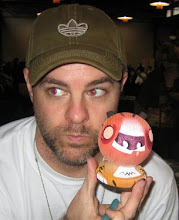COMICS AND FILM LANGUAGE
It has occurred to me, while watching David Lean’s GREAT EXPECTATIONS as I write this, that cinematic language and how it relates to comics storytelling—that being the progressive sequential images of comics—has evolved in ways we don’t acknowledge or respect.
Take for instance simplicity in staging and cutting—bare economics in relatable film language—in Lean’s GREAT EXPECTATIONS. Simple by today’s standards (2011). Progressive cutting from establishing shots to medium to close-ups and back out. This language of visual dynamics is economic and easy to follow and translates readily to a still-image format like comics. By today’s standards, however, the cutting dynamics of Jack Harris and his crew in GREAT EXPECTATIONS might be viewed as light and elementary by the average viewer. However, there is historic and elementary KNOWLEDGE at play here. And shockingly enough, this is the type of cutting most directly related to the strongest of dynamic comics storytelling in play in the modern age. Take Jeff Smith, or Paul Pope, or Cyril Pedrosa, or Jaime Hernandez. These fellows know when to move their “camera”, when to cut, when to shift compositions, at the most basic cinematic level--essential cinematic level, even. A reveal, a cut or push-in for dramatic impact. The fact that you can “hold” on a composition for solidarity is often times cast away in favor of “flash” and “style”. In actuality, relishing a composition can in fact strengthen and hearten a moment. Let a composition do its job: tell a story. And remember: to tell a story is to lay out one card at a time and not play your full hand until you need to.
Let us address this: in comics, we have only the still image to play with. Only the stagnant, untimed delivery of one image juxtaposed against the sequentially designed next. If, as a visual storyteller, you endeavor to tell your stories in comics and eventually hope to translate them to film, you might consider the editorial style of Jack Harris and David Lean. Economic--poignant and iconic—and effective.
Very simply: let a moment exist as long as it needs to, and “cut” only when it serves to progress your story. Impact. Small or large, impact is important. Savor the visual choice to establish a new plot dynamic. Only change the visual when there’s something new to say—a new story point—and understand that this choice will be obvious when you execute it. Impact.
Comics are NOT storyboards. They are very different animals. However, even different animals share a common ancestor…and sometimes that ancestor is an unknown quantity: is Bigfoot the missing link between great apes and man? Is there a way to merge the still images of comics with the timed images of film?
Thursday, July 07, 2011
Subscribe to:
Posts (Atom)





